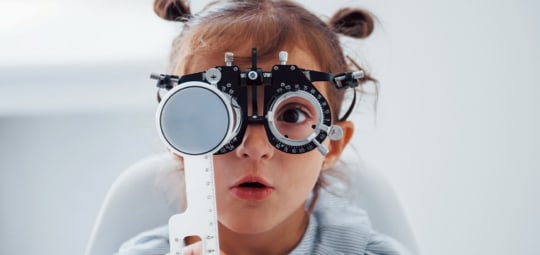Cataracts and glaucoma are 2 prevalent eye conditions that can impact people across all age groups, from young adults to the elderly. Each condition has its own distinct set of signs, symptoms, and treatment options.
Cataracts vs. Glaucoma: A Summary
Cataracts occur when the lens of the eye becomes cloudy, leading to blurred vision and difficulty seeing at night. Cataracts are often caused by aging, but can also result from factors such as diabetes, prolonged exposure to sunlight, or certain medications.`
On the other hand, glaucoma is a group of eye diseases that damage the optic nerve, typically due to elevated intraocular pressure. This condition often develops gradually and may not show symptoms until significant vision loss has occurred. While both cataracts and glaucoma can lead to vision impairment, their causes, symptoms, and treatment options differ significantly.
Cataracts can usually be treated effectively with surgery to replace the cloudy lens, whereas glaucoma requires ongoing management, which may include medications or surgical procedures to lower eye pressure and prevent further damage.
Let’s take a more in depth look at these conditions.
Causes
Cataracts occur when the lens of the eye becomes cloudy due to a buildup of protein. This is most frequently a consequence of aging, but may also be caused by genetics or environmental factors such as smoking and excessive exposure to UV light.
On the other hand, glaucoma is caused by damage to the optic nerve, which is responsible for transmitting visual information from the eye to the brain. This damage is often caused by increased pressure within the eye, known as intraocular pressure (IOP). However, in some cases, glaucoma can also occur with normal IOP levels due to other factors such as poor blood flow or a weakened optic nerve.
Symptoms
The most common symptom of cataracts is blurry vision, which can make it difficult to see objects clearly and perform daily activities like reading and driving. Other symptoms may include sensitivity to light, seeing halos around lights, or changes in color perception.
Glaucoma may not show any noticeable symptoms at first, however, as the disease progresses, it may cause gradual loss of peripheral (side) vision, also known as tunnel vision. In the later stages of glaucoma, central vision may also be affected.
Treatment
Cataract surgery is a common procedure that involves the replacing the cloudy lens of the eye with a clear artificial lens known as an intraocular lens (IOL This surgery is usually performed on an outpatient basis, making it quick and relatively safe for most patients.

Recovery time for cataract surgery is often minimal, allowing patients to resume normal activities within a short period. However, it’s important to note that not all cataracts require immediate treatment. If they aren’t significantly affecting a person’s vision or quality of life, a watchful waiting approach may be taken until symptoms warrant surgical intervention.
On the other hand, glaucoma treatment is crucial for preventing damage to the optic nerve and preserving eyesight. Management strategies often begin with the use of prescription eye drops or oral medications designed to lower intraocular pressure (IOP), a significant risk factor in glaucoma.
For some patients, however, surgery may be necessary. Both laser-based and incisional surgeries are available for glaucoma, depending on a patient’s needs. Laser surgeries are intended to enhance drainage from the eye by creating new pathways, thereby reducing IOP. In other cases, incisional surgeries may also be performed to help with fluid drainage or to reduce the production of fluid.
Regular monitoring by an eye care professional is essential for glaucoma, as the condition often requires ongoing treatment adjustments based on the patient’s response to therapy and any changes in their condition.
Prevention
While there is no guaranteed way to prevent cataracts or glaucoma, there are several proactive steps individuals can take to significantly reduce their risk:
- Protect your eyes from harmful ultraviolet (UV) rays by wearing sunglasses or a wide-brimmed hat when outdoors. Prolonged exposure to UV light can contribute to the development of cataracts.
- Quit smoking or avoid secondhand smoke, as it has been linked to an increased risk of both cataracts and glaucoma.
- Maintain a healthy diet rich in antioxidants, vitamins, and minerals. Foods like leafy greens, nuts, and fish have been shown to promote eye health.
- Monitor any changes in your vision and report them promptly to your eye care professional. Early detection and treatment are crucial for preventing further damage from cataracts or glaucoma.
- Keep chronic health conditions, such as diabetes and high blood pressure, under control. These conditions can also increase the risk of developing cataracts or glaucoma.
- Schedule regular comprehensive eye exams with an eye care professional to monitor and detect any early signs of cataracts or glaucoma.
Discover Comprehensive Eye Care for All Ages at The Village Eye Care
While cataracts and glaucoma are both common eye conditions that can significantly impact vision, they have different causes and require different forms of treatment. Detecting either condition early allows you to receive prompt and appropriate care. With proper management and treatment, both conditions can be managed, preserving good vision in the long term.
At The Village Eye Care, we prioritize the health and well-being of our patients and provide comprehensive eye care services for all ages. From routine eye exams to the treatment of eye diseases, our team is dedicated to ensuring that your vision remains clear and healthy. Contact us today to schedule an appointment and take proactive steps toward protecting your eyesight.
















